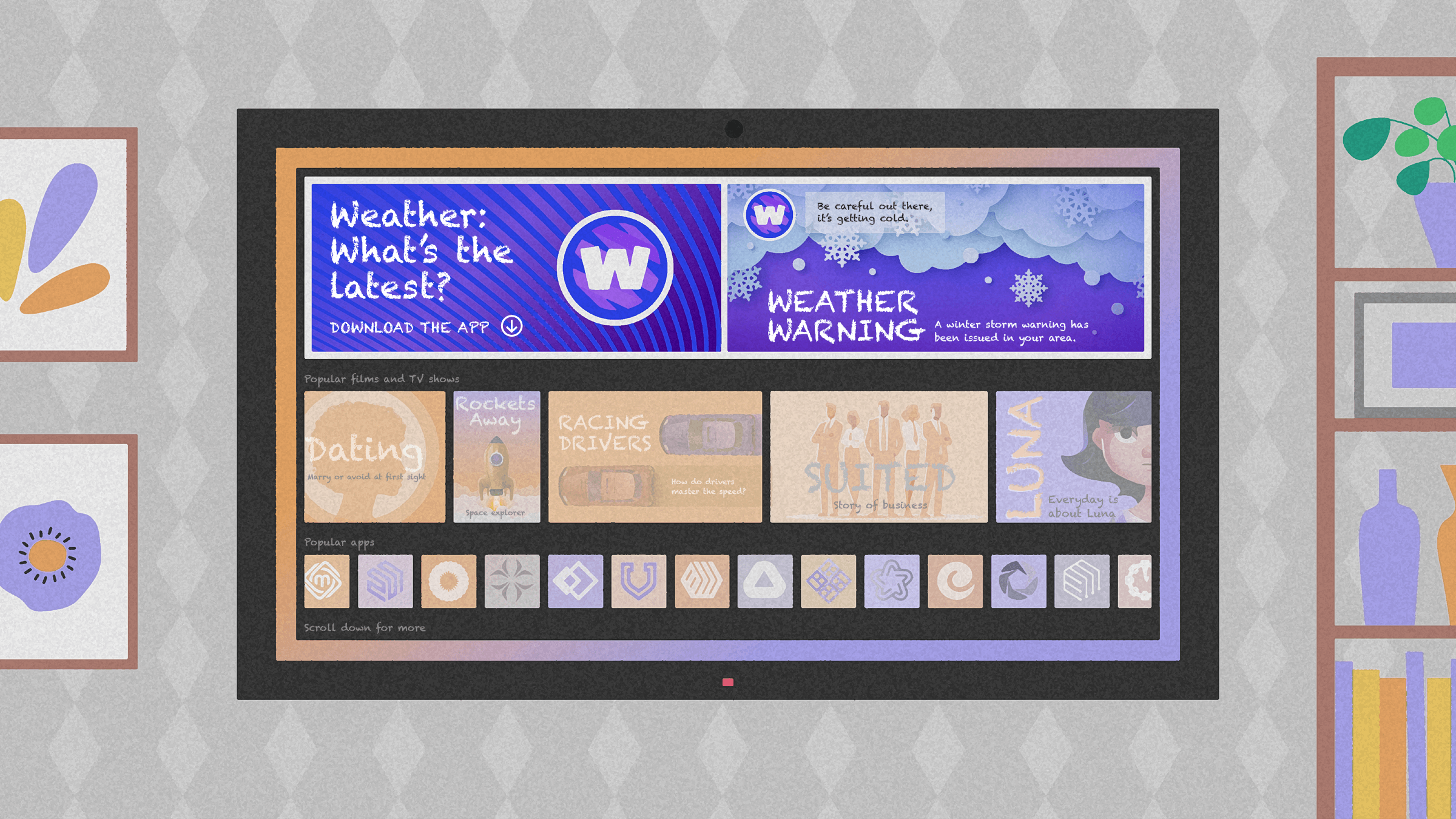
How Tiles Home Screen Ads are Creating New Possibilities for Buyers and Media Owners
Chris Signore, Head of Revenue - AdServing
February 28, 2024 | 5 min read
When we launched Tiles back in 2022, we were already planning for the streaming world that would come to pass, where ad-supported content with innovative ad experiences are core growth drivers. Home screen ads create contextually relevant content and messaging to engage users at the first point of contact in their viewing session. That same sophistication, intelligence, and control for the management of content on the home screen can be leveraged beyond content recommendations to include sponsored ads for contextually relevant products and services.
New Inventory with the same mission
As users spend increasing amounts of time streaming content, blending SVOD, AVOD, and free ad-supported streaming TV (FAST), there’s growing demand from buyers – programmers and traditional advertisers – for impactful ways to engage those audiences. As a result, selling native inventory is becoming an area of creative innovation for OEMs and streaming services, providing natural spaces for advertisers to reach audiences across ad-supported AND harder-to-reach subscription services. Directing users to the most valuable content to create a satisfying user experience while meeting the objectives of direct sales, monetization, and/or other strategic initiatives such as increasing session times.
Streaming’s Answer to Native
We’ve previously discussed some of the applications of home screen ads, such as content recommendations, sponsorships, house ads, and pause ads. Supporting everything within the native spec creates a world of possibilities, giving publishers the flexibility to showcase custom creatives within the streaming interface in a variety of sizes and formats to drive a range of actions. If you can think of it, you can do it. Creating the natural spaces for native CTV ads is relatively straightforward – the spaces already exist.
Think about those tiles on the home screen or when a user pauses a program. Publishers can make those spaces available to programmers and advertisers to highlight content recommendations or feature non-intrusive display advertising.
Examples include:
- A news, weather, or sports app serving a Tile to deliver contextually relevant alerts to encourage app downloads while adding to the user experience or encouraging an action such as “Go vote.”
- A food delivery service serving a pause ad during a binge-watching session to promote an ordering app or discount on takeout food to drive downloads and/or sales.
- Streaming services serving a Tile to seek feedback on the user experience, or a research company seeking respondents.
- Takeover campaigns during the Olympics with a Sponsored Hero Tile carousel that includes event news, app download opportunities, e-commerce opportunities (merch), and content recommendations (live schedule, documentaries, highlights, etc.) Or a series takeover campaign with Sponsored Hero Tiles that includes details of a new series, and to set reminders, etc.
- Local vendors serving Tiles to raise awareness of the brand, targeting local users to drive visits and sales.
- A pause ad running in a sports program where the media owner can layer 1st party data (e.g. male, 30-35 + location) to showcase that audience to an advertiser for food or delivery in the area could serve relevant creative enriching the user experience.
The possibilities really are endless, but the key is to keep them contextually relevant to the user, and this requires an ad server that can handle the data as well as the execution capabilities to make the process seamless.
Innovating Formats and Reducing Friction
Core to Magnite’s value proposition is removing friction involved in managing and buying ads of varying formats across the media ecosystem. At present, Magnite’s SpringServe platform is the only solution that can deliver the Tiles format as a third-party ad server, providing built-in, end-to-end support to facilitate a native experience that stays relevant for the user and has controls in ad-serving. Those controls include SpringServe’s advanced ad-serving functionality, including targeting and reporting, to optimize campaign performance.
The Direct Connect feature in SpringServe allows users to interact taglessly with other SpringServe accounts. Adding Tiles to Direct Connect will allow the seamless scaling of the format, enabling sellers to share inventory between accounts while also giving buyers an easy way to test and activate their use of the format.
Making the native inventory available through programmatic platforms is the next step. This will help the continued growth of the format by removing further friction in managing the array of formats and executions for OEMs and streaming services. For advertisers, this will simplify the workflows involved in buying Tiles and incorporating them into their media plans.
The streaming landscape is rapidly evolving, offering an array of viewing choices to consumers and opportunities for marketers to find new and innovative ways to reach them. For media owners and OEMs that can carve out this new inventory and make it readily available to advertisers, there’s an opportunity to drive incremental yields in non-intrusive ways. For advertisers, the challenge is understanding the value of these new formats. Those who proactively adopt these new formats will be well-positioned in the evolving media landscape, ensuring their place at the forefront of this dynamic channel.
Tags: Advertising, Buyer, Seller, Streaming, Tiles
Contact Us